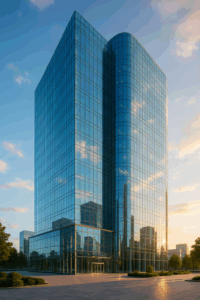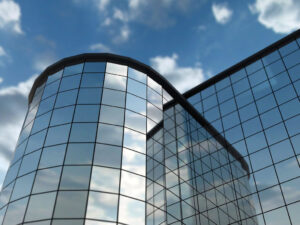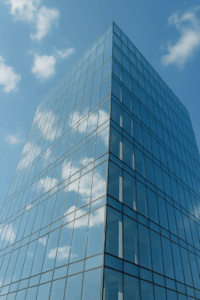Glass as an architectural element
Glass as an architectural element

Glass is included in the design of facades, roofs, ceilings, interior dividers and even floors, and gives the building a light and elegant visual shape. The glass facades reflect light and the surrounding environment, causing the building to interact with the sky, clouds, and even the city itself artistical.
The beauty made by glass in buildings

1-Transparency and openness
Glass gives buildings a sense of openness, as it connects the inside and outside, and allows sunlight to penetrate into the spaces, which enhances psychological comfort and a sense of spaciousness.
2-Playing with light
Through glass, architects can control the way natural light enters, creating patterns of changing shades and lighting throughout the day, and giving the building permanent visual vitality and beauty.
3-Reflections
Reflective glass reflects the sky and the ocean, creating a charming aesthetic scene, especially in skyscrapers, where buildings seem to melt in the sky or combine with clouds.
4-Simplicity and elegance
Glass designs are usually characterized by purity and simplicity, which is in line with contemporary architectural trends that focus on clean lines and calm appearance.
Types of glass in modern architecture

1-Insulating glass: Reduces heat and noise, and provides thermal comfort inside the building.
2-Heat-treated (toughened) glass: more resistant to breakage and used in high or exposed places.
3-Smart glass: It can change its transparency according to light or electricity.
4-Decorated or printed glass: Used to give an artistic touch to the interior facades or dividers.
This email is intended solely for the addressee(s) and the information it contains is confidential. If you are not the intended recipient please delete this email and inform the sender as soon as possible, and any copying, distribution or other action taken or omitted to be taken in reliance upon it is prohibited and may be unlawful.